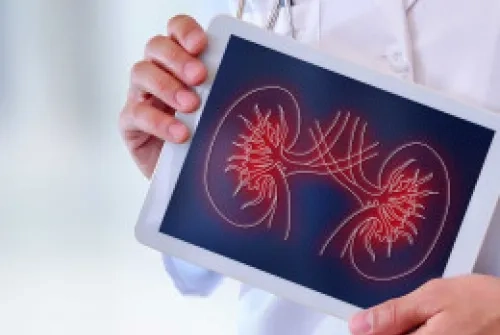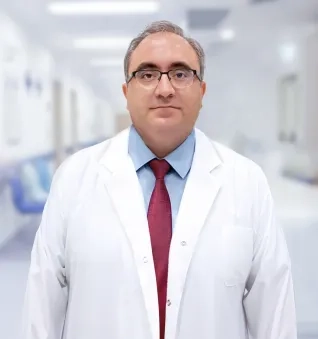Alo Yeditepe
Alo Yeditepe
AV FISTULA Should Be Done At The Right Time For Hemodialysis Patients
The most reliable method for vascular access, which is defined as the "life path" for hemodialysis patients and which is of vital importance, namely the autogenous method: AVF. Central venous catheters are used in emergency cases, synthetic grafts are used in semi-emergency cases, and the autogenous method is used in non-emergency cases. If one of the kidney transplants, peritoneal dialysis, or hemodialysis methods is not applied in patients who have reached the end stage of kidney failure, there are vital risks for the patients as their blood cannot be changed.
Today, hemodialysis is the most used method in the treatment of end-stage renal disease. Although kidney transplantation is the right method, it can only be applied to a small number of people for various reasons. The catheter insertion method is not preferred in terms of serious complications, except in emergency/mandatory situations. Although peritoneal dialysis is actually a good and preferred method, it cannot be used sufficiently due to difficulties in use.
Safe, well-functioning vascular access is vital for hemodialysis patients. Because waste and harmful substances accumulating in the body need to be cleaned by a machine. In order to enter this machine, vascular access is needed that can be used safely for 4 hours, 3 days a week on average. In this way, a surgical procedure defined as the opening of an arteriovenous fistula (AVF) is applied in patients who will receive long-term hemodialysis treatment.
Chronic kidney patients still do not know exactly when and where to apply for the procedure they should have before hemodialysis treatment starts.
Three Different Methods Are Used According to The Patient's Condition
Catheters are the riskiest method that is not preferred much. The most suitable and preferred method is the autogenous method, which is done with the person's own vessels. In cases where the autogenous method cannot be used or in semi-emergency cases, synthetic grafts are used. In other words, catheters are used in emergencies, synthetic grafts are used in semi-emergency situations, and the autogenous method is used in non-emergency situations, which is thought to have a few months to enter dialysis. If possible, AV fistulas are formed in the unused arm (usually the left) and the region near the hand, by establishing a connection between the artery and the vein. By suturing the artery and vein to each other, it is ensured that the arterial blood flows into the vein and dialysis can be performed easily due to the high amount of blood flowing through this vessel on the surface. In AVFs, this takes an average of 6 weeks, as these vessels need to be dilated and 'matured' in order for the patient to enter dialysis with their own vessels. Therefore, patients should have regular nephrology follow-ups and AVF should be performed a few months before the emergency. However, when the patient comes in an emergency, it may be necessary to insert a catheter. If the patient has undergone a lot of surgeries and the appropriate vessel for the AVF cannot be found, it may be necessary to insert a catheter again.
Patients Do not Know Where to Apply
There are around 70 thousand dialysis patients in our country. Approximately 15% of the population in Turkey has chronic kidney failure. While these patients should be followed up by nephrologists, unfortunately, a significant number of them apply urgently and a catheter has to be inserted, as the physician is not consulted on time.
When Should the Vascular Access Preparation Be Done in Patients Who Will Undergo Dialysis?
A suitable vascular access route for hemodialysis should first be made from the patient's unused arm and the area closest to the hand, if possible, just above the wrist. The most important issue is to determine the right time for vascular access preparation in patients who will undergo dialysis. It is difficult to predict when patients will need dialysis treatment. For this reason, close and frequent follow-up by nephrologists is very important. In some patients, a catheter is needed because it is too late to perform vascular access. In some patients, vascular access is opened, but dialysis is not needed because the disease progresses very slowly. The majority of patients are over the age of 65. Since there are many co-morbidities such as diabetes, hypertension, and heart problems, it becomes difficult to predict everything in advance. The only way to minimize this negative situation is the follow-up up with the patient under the control of a nephrologist.
Avoiding Possible Complications
When planning vascular access in hemodialysis patients, catheter insertion should be avoided as much as possible in order to prevent possible complications. The priority should be AV fistula. In addition, if possible, it should be done on the arm (complication rates are much higher in procedures performed on the leg) and in the area closest to the hand, away from the shoulder. Because the risk of complications increases as it reaches the anterior elbow region and higher parts. The incidence of complications increases with age, as co-morbidities also increase. However, the rate at which the disease progresses and reaches the final stage becomes slower in advanced ages. In summary, the right procedure needs to be applied to the right patient and at the right time.
The Patient Should Pay Attention to Personal Hygiene
In order to prevent complications, the patient must give importance and priority to his/her personal hygiene. Complication rates, especially infection, are seen to be higher in patients who do not pay attention to their personal hygiene. Not smoking, consuming plenty of water, eating a balanced diet, as well as staying away from negative thoughts as much as possible, and trying to stay connected to life is extremely important for the healthy conduct of the process.
This content was prepared by Yeditepe University Hospitals Medical Editorial Board.
”
See Also
- What is Hypoglycemia?
- Common Misconceptions About Kidney Transplantation
- Kidney Diseases and Treatment Methods
- 10 Questions About Kidney Transplantation
- How Should the Daily Salt Consumption Amount Be?
- What is Cirrhosis? What Causes Cirrhosis
- Misconceptions About Hypertension
- Chronic Kidney Disease and Treatment Methods
- What is Hypertension?
- Things Wondered About Kidney Transplantation and Organ Donation
- If You Consume More Than 5 grams of Salt...
- The Frequency of Hepatitis Seen in Dialysis Patients Is Decreasing
- 12-Year-Old Tuğba Nur Survived with Transplant
- Excess Protein Does Not Increase Muscle Mass, and It Impairs the Kidneys
- Pay Attention to Kidneys in Pregnancy!
- He Held On To Life with His Brother's Kidney
- Recommendations to Strengthen the Immune System
- Kidney Failure Caused by Ear Obstruction
- There is Still a Lot of Misconception About Organ Donation
- He Lost 20 Kilograms in 40 Days for His Wife
- One Out of Every Seven People Has Kidney Disease
- How Should Kidney Patients Be Protected From COVID-19 Coronavirus?
- What is Propolis? How to Use Propolis?
- Improper Nutrition Invites Kidney Failure
- Important Warning from the Expert: “Not Adding Salt to Meals Alone Is Not Enough”
- 8 People a Day Lose Their Lives While Waiting for Organ Transplantation in Our Country
- Attention to Drug Use After Kidney Transplantation!
- Are Your Kidneys Really Healthy?
- Being Thirsty in the Heat Tires the Kidneys!
- Tissue Harmony Is Also Important for Success in Kidney Transplant
- Phytotherapy and Immune System
- Hereditary Kidney Diseases Are Underrecognized!
Alo Yeditepe





